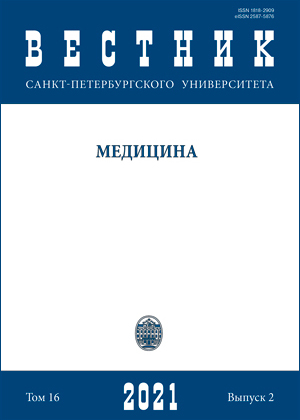Hygienic assessment of phthalate migration from plastic containers for drinking water
DOI:
https://doi.org/10.21638/spbu11.2021.206Аннотация
Packaged drinking water is one of the optimal forms of providing the population with drinking water; therefore, the achievement of guaranteed quality of this product is an urgent task. Chemical components such as phthalates in packaging can migrate into drinking water and have a negative impact on human health. The aim of our work was to assess the levels of migration of phthalates (DEHP, DiBP, DNBP) into aqueous model media at various temperature conditions (temperatures of 20 °C and 40 °C) for 30 days from PET bottles. We examined 7 samples of polymeric packaging material (unused PET bottles with a volume of 6 to 19 liters) intended for drinking water. The measurement procedure was performed using gas chromatography with mass spectrometric detection (GC-MS). The results of our research showed that packaging made of polyethylene terephthalate is a source of chemical contamination of bottled water, which is based on the processes of migration of polymer components. The highest level of migration was obtained for di (2-ethylhexyl) phthalate (DEHP). No statistically significant differences were found between the temperature of the model environment and the concentration of phthalates. The results obtained indicate the need to include di (2-ethylhexyl) phthalate in the list of monitored sanitary and hygienic safety indicators in the technical regulations on the safety of packaged drinking water, including natural mineral water with
established maximum permissible concentrations.
Ключевые слова:
drinking water, packaged in containers, PET bottles, bottled water quality, phthalates (di (2-ethylhexyl) phthalate, di (n-butyl) phthalate, di (isobutyl) phthalate), migration of chemicals, bottled water
Скачивания
Библиографические ссылки
References
Загрузки
Опубликован
Как цитировать
Выпуск
Раздел
Лицензия
Статьи журнала «Вестник Санкт-Петербургского университета. Медицина» находятся в открытом доступе и распространяются в соответствии с условиями Лицензионного Договора с Санкт-Петербургским государственным университетом, который бесплатно предоставляет авторам неограниченное распространение и самостоятельное архивирование.




